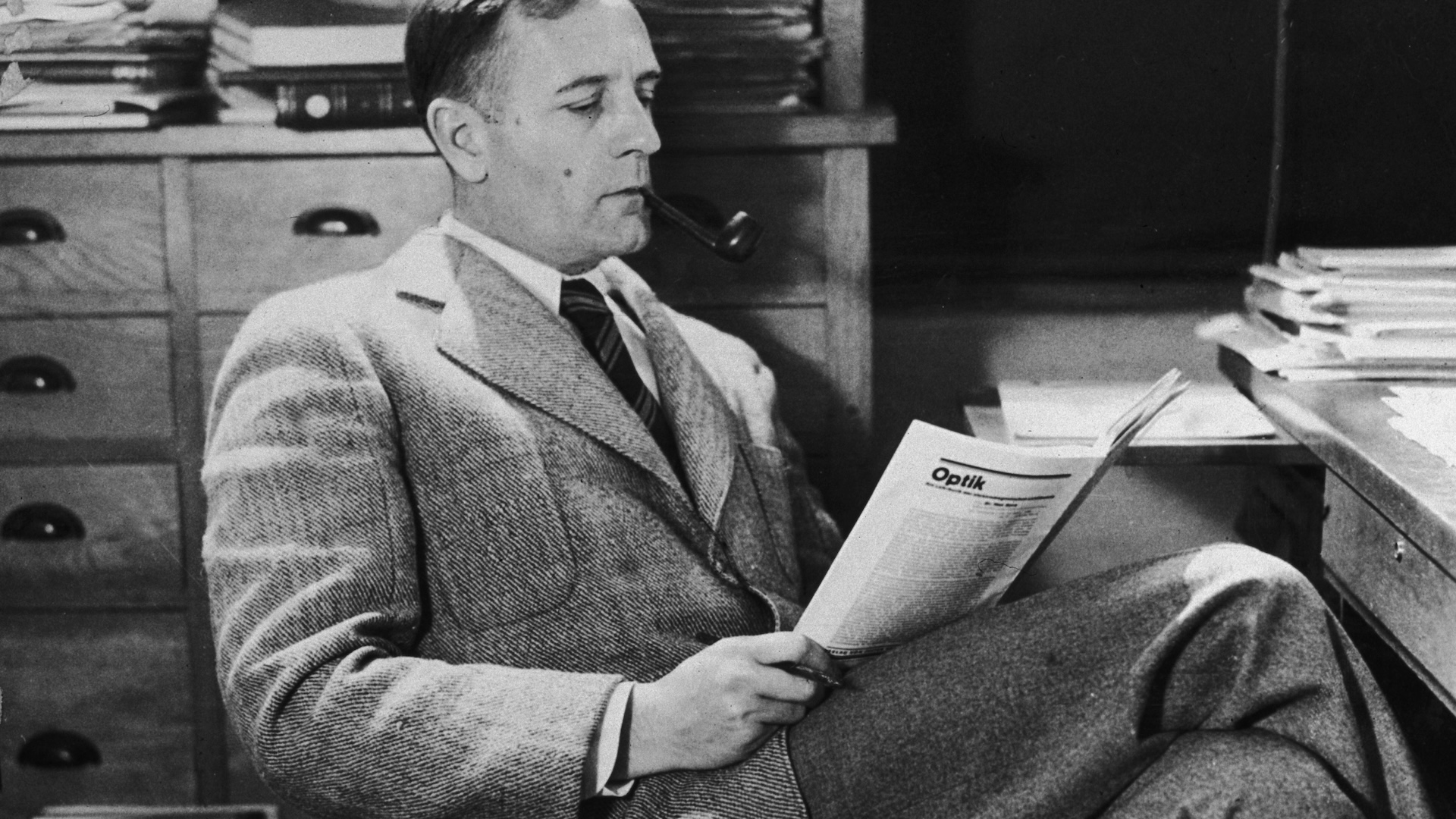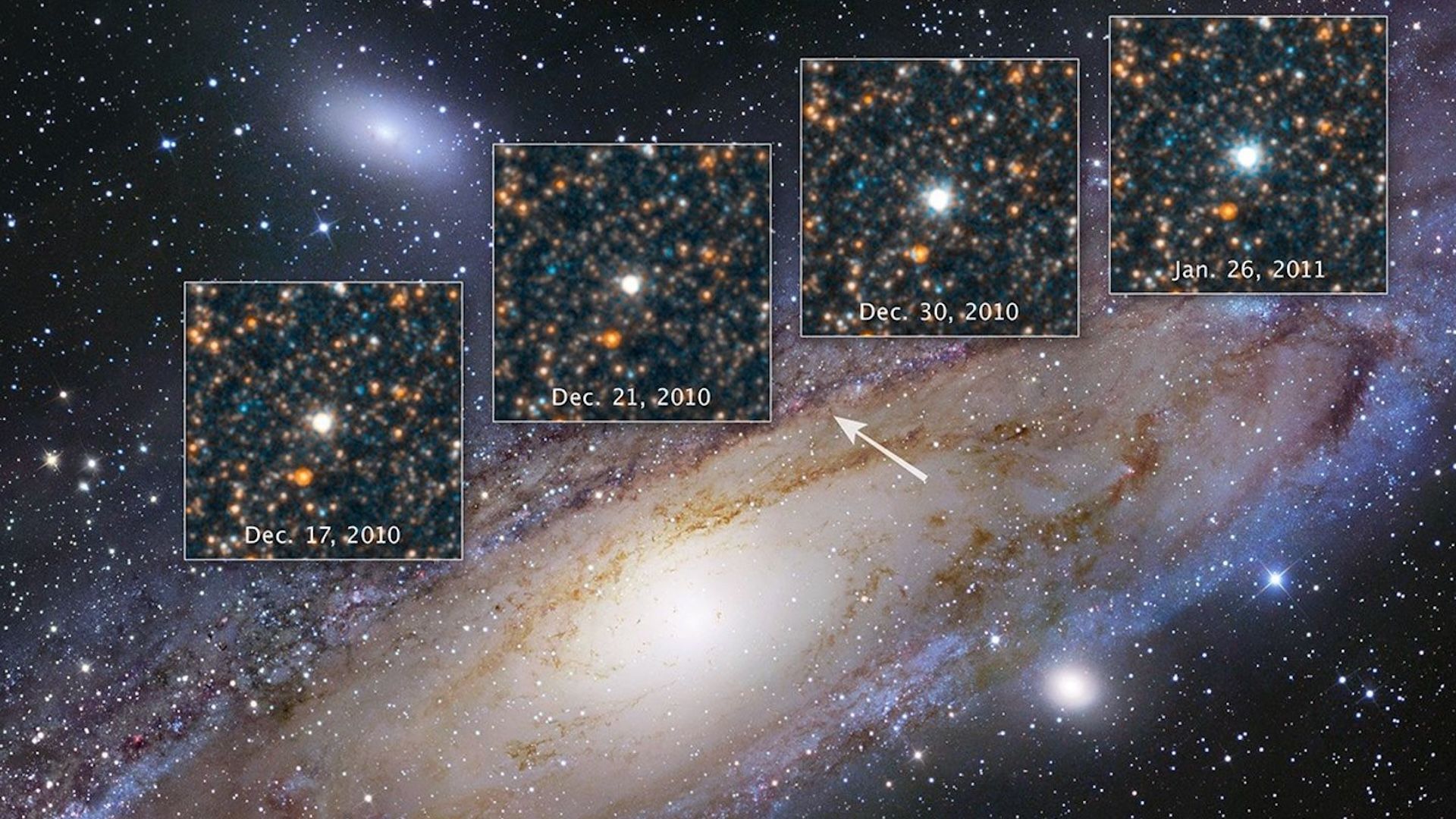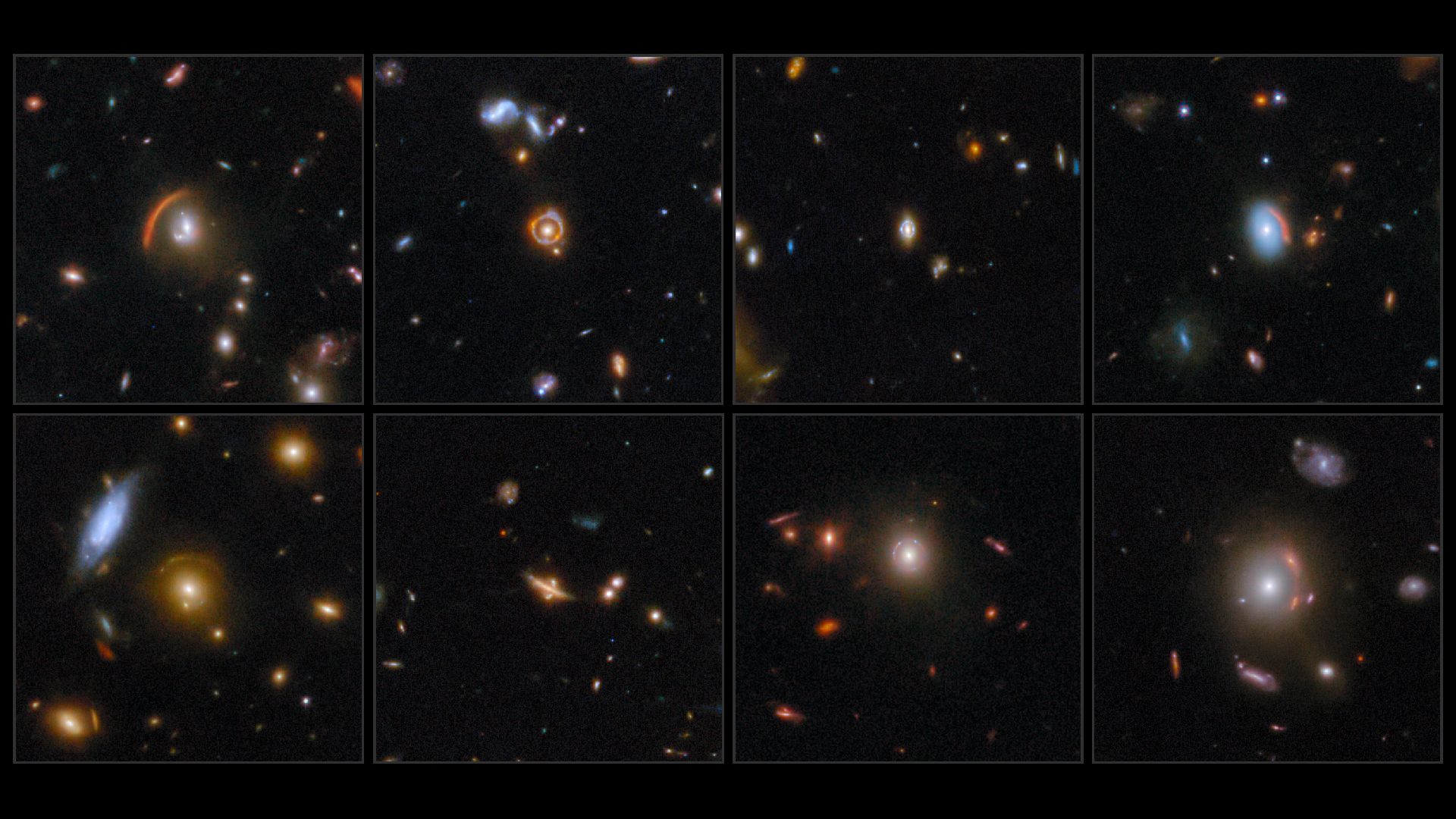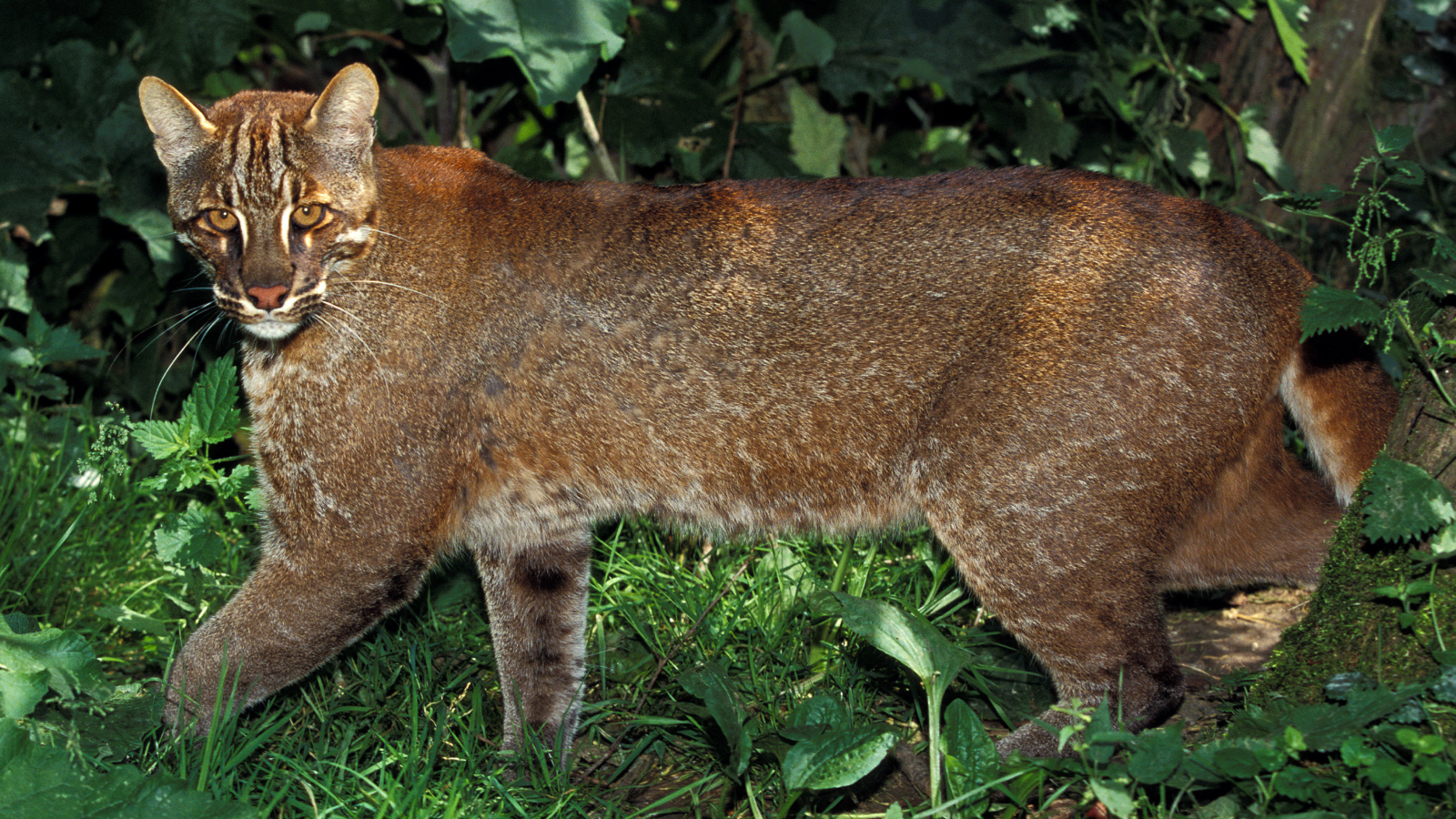QUICK FACTS
Date: Night of Oct. 5, 1923
Where: Mount Wilson Observatory, near Pasadena, California
Who: Edwin Hubble
On the night of Oct. 5 to 6, 1923, Edwin Hubble discovered a new star — and revealed the utter vastness of the universe.
At first, Hubble thought the object was a nova, a type of exploding star, but a closer look revealed the star’s light varied in intensity over the course of the night, brightening, dimming and brightening again in a predictable pattern. On one photographic plate, he crossed out the “N” for nova and replaced it with “VAR!” for variable star.
Named M31-V1, it was a cepheid variable star, a type of star that fluctuates in intensity with striking regularity. Hubble wasn’t the first to discover these cosmic “standard candles.” In 1912, Harvard observatory astronomer Henrietta Swan Leavitt had cataloged the luminosity and period (pattern of brightening and dimming) of 25 cepheids in the small magellanic cloud, a nearby dwarf galaxy. The brighter a cepheid, the slower it flickered, she found.
But Hubble’s observations proved to be pivotal to a great debate raging at the time. Astronomer Harlow Shapley thought the Milky Way constituted the entire universe, while his rival Heber Curtis had done a rough measurement of the distance to neighboring Andromeda, also known as Messier 31, that suggested we lived in an “island universe,” teeming with large and staggeringly distant galaxies.
On a dark night, our neighboring galaxy had always been visible to the naked eye, but over the years, skywatchers had debated whether it was a constellation, a nebula or another galaxy.
Hubble’s discovery of the cepheid next door buttressed Curtis’ argument that Andromeda was a separate galaxy from our own. Hubble would go on to measure M31’s cepheid on several nights over the year. The flickering star’s variable light intensity enabled Hubble to calculate that Andromeda was a vast 900,000 light-years away.
Leavitt’s work on cepheids proved invaluable for Hubble’s other great finding: the expansion of the universe. While others, such as Georges Lemaître, had theorized that the universe was expanding by using Einstein’s theory of general relativity, Hubble confirmed it with precise calculations.

He combined Leavitt’s cepheid distance data with data from Milton Humason and others that showed galaxies’ “red shift” — in which wavelengths of light are stretched, or shifted toward the redder end of the spectrum, by the Doppler effect as they move away from us. More-distant objects had a higher red shift, showing they were moving away faster than objects nearby.
Hubble’s calculated expansion rate would come to be called the Hubble constant. Since cepheid M31-V1’s discovery, multiple lines of evidence have confirmed that we live in an ever-expanding universe, and with the discovery of dark energy in the 1990s, we now know that expansion is accelerating. But modern measurements of the universe’s expansion rate don’t line up with each other. Determining the source of the discrepancy could pave the way for us to discover new physics, and upend accepted cosmological models once more.














